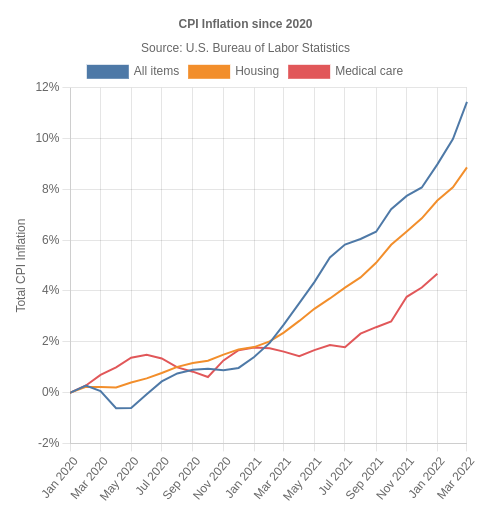Prediction: Value of £100 from 2021 to 2050
£100 in 2021 is equivalent in purchasing power to about £200.82 in 2050, an increase of £100.82 over 29 years. The pound had an average inflation rate of 2.43% per year between 2021 and 2050, producing a cumulative price increase of 100.82%. The buying power of £100 in 2021 is predicted to be equivalent to £200.82 in 2050.
This calculation is based on future inflation assumption of 2.00% per year. Use the calculator on the left to change this prediction. Or, use the annual inflation rate calculator to view inflation in the past.
| Cumulative price change | 100.82% |
| Average inflation rate | 2.43% |
| Converted amount £100 base | £200.82 |
| Price difference £100 base | £100.82 |
| CPI in 2021 | 1,180.589 |
| Inflation in 2021 | 2.49% |
| £100 in 2021 | £200.82 in 2050 |
Buying power of £100 in 2050
This chart shows a calculation of buying power equivalence for £100 in 2021 (price index tracking began in 1750).
For example, if you started with £100, you would need to end with £200.82 in order to "adjust" for inflation (sometimes refered to as "beating inflation").
Future inflation is estimated at 2.00%.When £100 is equivalent to £200.82 over time, that means that the "real value" of a single U.K. pound decreases over time. In other words, a pound will pay for fewer items at the store.
This effect explains how inflation erodes the value of a pound over time. By calculating the value in 2021 dollars, the chart below shows how £100 is worth less over 29 years.
This table shows the results of the inflation prediction, with base values from the Office for National Statistics:
Data source & citation
Raw data for these calculations comes from the composite price index published by the UK Office for National Statistics (ONS). A composite index is created by combining price data from several different published sources, both official and unofficial. The Consumer Price Index, normally used to compute inflation, has only been tracked since 1988. All inflation calculations after 1988 use the Office for National Statistics' Consumer Price Index, except for the current year, which is based on The Bank of England's forecast.
You may use the following MLA citation for this page: “2050 Inflation Prediction | Future UK Inflation Calculator.” Official Inflation Data, Alioth Finance, 2 Apr. 2025, https://www.officialdata.org/uk/inflation/2021?amount=100&endYear=2050&future_pct=0.02.
Special thanks to QuickChart for their chart image API, which is used for chart downloads.
in2013dollars.com is a reference website maintained by the Official Data Foundation.
| Cumulative price change | 100.82% |
| Average inflation rate | 2.43% |
| Converted amount £100 base | £200.82 |
| Price difference £100 base | £100.82 |
| CPI in 2021 | 1,180.589 |
| Inflation in 2021 | 2.49% |
| £100 in 2021 | £200.82 in 2050 |

